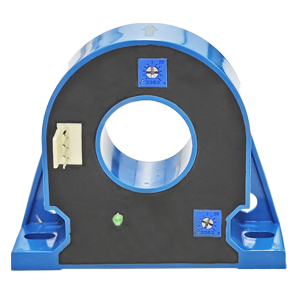
Application Guide Residual Current Devices
Residual Current Devices (RCDs) are essential components in electrical system safety. Designed to prevent electric shocks and reduce the risk of electrical fires, RSDs safeguard lives and equipment, making them a fundamental part of any electrical safety protocol.
This residual current device guide explores the functionality, types, and applications of RCDs in various settings. Understanding RCDs is crucial for ensuring a safe and efficient electrical environment, whether you’re an electrical engineer, safety officer, or facility manager.
What is a Residual Current Device (RCD)?
An RCD or Residual Current Device is an electrical safety mechanism that monitors the flow of electricity within a circuit.
When it detects an imbalance, such as leakage to the ground, the RCD rapidly cuts off the power supply to prevent harm. Known in some regions as Residual Current Circuit Breakers (RCCBs), Safety Switches, or Ground Fault Circuit Interrupters (GFCIs), RCDs are crucial in preventing both electrical shocks and fire hazards.
Definition and Functionality of RCDs
RCDs detect a difference between the current flowing through the live and neutral wires.
In a standard circuit, the current in these two wires remains balanced. If there’s a fault, such as someone coming into contact with a live wire or a leakage to earth, this disrupts the balance. The RCD identifies this imbalance and disconnects the circuit in milliseconds, preventing electric shocks and fire risks.
Applications of Residual Current Devices in Various Settings
RCDs are versatile devices used in numerous environments, from homes to factories. Selecting the right RCD for the correct setting is critical to maximizing safety.
Explore High Precision Meters and Power Supply applications here.
Residential Applications
RCDs are crucial in preventing electrical accidents in homes, particularly in high-risk areas such as kitchens, bathrooms, and outdoor outlets.
Household electrical appliances like washing machines, dryers, and outdoor lighting are often installed with RCDs to protect users from electric shocks or fires. RCDs in residential setups are typically installed at the main electrical panel or on individual circuits.
Commercial and Workplace Applications
In commercial spaces, RCDs safeguard workers and customers from electrical hazards.
Offices, retail environments, and public spaces often contain portable or movable electrical equipment, which increases risks. Tools used in high-risk areas exposed to moisture, dust, or vibration require additional protection. RCDs help minimize these risks by ensuring electrical equipment is de-energized immediately when a fault is detected.
An example of a standard commercial RCD application is on construction sites, where electrical tools are frequently moved and exposed to harsh conditions. RCDs help protect workers by preventing electrical shocks and extending the lifespan of electrical tools and equipment.
Residual Current Device Industrial Applications
The stakes are higher in industrial environments due to heavy machinery and high-powered electrical systems.
Factories, workshops, and manufacturing plants rely on RCDs to prevent severe electrical hazards. Equipment such as welding machines, drills, and conveyor systems are often used in extreme environments, subjecting them to wear and tear. RCDs ensure that even in case of insulation failure or exposure to moisture, the power supply is cut off to prevent potentially fatal accidents.
Examples of industrial equipment requiring RCDs include:
- Electric welders
- Portable bench saws
- Cement mixers
- Extension cords used in rugged settings
How Do Residual Current Devices Work?
RCDs monitor the electrical current flowing through a circuit’s live and neutral conductors. Under normal conditions, the current passing through these two wires is balanced. When a fault occurs—such as a person touching a live wire or leakage through insulation—the current becomes imbalanced, and the RCD detects this fault, instantly cutting off the power supply.
This rapid response prevents electrical shocks, which can be fatal, and mitigates the risk of electrical fires caused by faulty equipment.
Mechanism of Current Detection
An RCD’s core function is its ability to measure the electrical current balance between live and neutral wires. The conductors pass through a magnetic ring that detects any difference in current levels. When an imbalance is detected—indicating a leakage—the RCD acts within milliseconds to disconnect the circuit and eliminate the risk of electrical hazards.
Response to Electrical Faults
RCDs are designed to protect against various electrical faults, including ground faults (leakage of current to earth), overloading of circuits, and short circuits. For example, if an electric drill with faulty wiring is plugged in and leaks current, the RCD will detect the fault and shut off the power supply before causing harm. Similarly, in the case of damaged extension cords or portable electrical equipment frequently moved between locations, RCDs help ensure continuous safety.
Key Considerations for Choosing the Right Residual Current Device
Choosing the right RCD is essential for maximizing electrical safety in any environment. Factors to consider when selecting an RCD include:
Type of load: Different RCDs are suitable for different electrical loads, such as AC, DC, or mixed currents.
Installation environment: The operating conditions, such as exposure to moisture, dust, or vibrations, affect the choice of RCD.
Required sensitivity: Depending on the environment’s risk level, different RCDs have varying sensitivity levels, typically measured in milliamps (mA). For instance, residential setups may require RCDs with a 30mA sensitivity, while industrial settings may need more robust options.
Ensure the selected RCD complies with relevant safety standards and local regulations to guarantee effective protection.
Testing of residual current devices
Test RCDs regularly to ensure proper function.
Test fixed and socket RCDs every three months. Portable RCDs, often used in industrial settings, should be tested before each use.
Most devices have a ‘test’ button to check functionality. If the RCD doesn’t trip, it needs further inspection or replacement. Regular testing by a qualified professional is required in workplaces, and records are kept for future reference.
Enhance Electrical Safety with Hangzhi Precision’s RCD Solutions
RCDs are indispensable in safeguarding people and property from electrical hazards and preventing accidents.
Hangzhi Precision offers a range of high-quality RCD solutions tailored for various applications, from residential homes to extensive industrial facilities.
Hangzhi AC / DC Leakage Current Sensor, developed on the basis of Multi-Point-Zero-Flux-Gate-Technologie, is a measuring module that uses the principle of electromagnetic induction to convert the measured current into a DC/AC voltage (or DC/AC current) signal proportional to the primary current. The primary and secondary sides are highly insulated. It has the characteristics of high accuracy, high linearity, high integration, small size, simple structure, stable long-term work and adapting to various working environments.
For more information on choosing the right RCD, visit our contact page.
